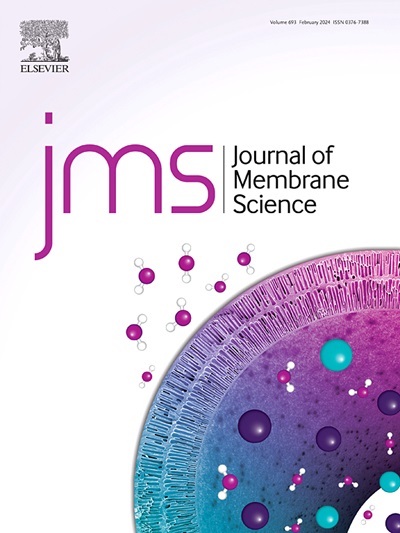优化中空纤维膜氧合器:改善气体交换和减少血液损伤的多目标方法
IF 8.4
1区 工程技术
Q1 ENGINEERING, CHEMICAL
引用次数: 0
摘要
体外膜氧合为严重心肺功能障碍患者提供挽救生命的支持;然而,它的实施伴随着显著的并发症,包括溶血和血栓形成。这些并发症表明需要改进中空纤维膜氧合器的设计。本研究提出了一个多目标优化框架,旨在提高气体交换效率,同时最大限度地减少血液损伤。通过微piv测量验证了二维计算流体动力学模型,该模型可以模拟由三个几何参数(纤维直径、距离直径比和角度)和流量参数(血流量)定义的200种纤维构型。以CO2去除比、死区/总面积比和溶血指数为目标,分别代表气体交换效率、膜模块内血栓形成电位和溶血。目标使用未知指数的多元多项式函数建模,并使用改进的增强Jaya算法确定。采用Pareto前解进行单目标和多目标优化,然后采用加权和和和目标规划方法确定最优布局。结果表明,最大比CO2去除率、死区与总面积比和溶血指数分别为250.3 mLCO2 min-1 m-2、0.0254%和0.011 × 10−3%。此外,本研究确定了距离直径比是影响所有物镜的关键因素。最后,采用加权和法和目标规划法计算出最佳配置,最佳配置为低角度、小直径、相对适中的径径比、高血流量。本文章由计算机程序翻译,如有差异,请以英文原文为准。
Optimizing hollow fiber membrane oxygenators: A multi-objective approach for improved gas exchange and reduced blood damage
Extracorporeal Membrane Oxygenation provides life-saving support for patients with severe heart and lung dysfunction; however, its implementation is associated with significant complications, including hemolysis and thrombosis. These complications address the need for an improved design of hollow fiber membrane oxygenators. This study presents a multi-objective optimization framework aiming to enhance the gas exchange efficiency while minimizing blood damage. A 2D computational fluid dynamics model, validated with micro-PIV measurements, was developed to simulate 200 fiber configurations defined by three geometric parameters (fiber diameter, distance-to-diameter ratio, and angle) and a flow parameter (blood flow rate). Specific CO2 removal, dead-zone-to-total-area ratio, and hemolysis index were established as objectives, representing gas exchange efficiency, thrombosis potential within the membrane module, and hemolysis, respectively. Objectives were modeled using multivariate polynomial functions with unknown exponents and determined using the modified enhanced Jaya algorithm. Single-objective and multi-objective optimization were performed using Pareto front solutions, followed by weighted sum and goal programming methods to identify optimal arrangements. The findings demonstrated that the maximum obtained specific CO2 removal, dead-zone-to-total-area ratio, and hemolysis index are 250.3 mLCO2 min-1 m-2, 0.0254 %, and 0.011 10−3 %, respectively. Furthermore, this study identifies the distance-to-diameter ratio as the key factor affecting all the objectives. Finally, the calculated optimal configuration from both weighted sum and goal programming methods suggests that the best configuration includes low angle, small diameter, and relatively moderate distance-to-diameter ratio, and high blood flow rate.
求助全文
通过发布文献求助,成功后即可免费获取论文全文。
去求助
来源期刊

Journal of Membrane Science
工程技术-高分子科学
CiteScore
17.10
自引率
17.90%
发文量
1031
审稿时长
2.5 months
期刊介绍:
The Journal of Membrane Science is a publication that focuses on membrane systems and is aimed at academic and industrial chemists, chemical engineers, materials scientists, and membranologists. It publishes original research and reviews on various aspects of membrane transport, membrane formation/structure, fouling, module/process design, and processes/applications. The journal primarily focuses on the structure, function, and performance of non-biological membranes but also includes papers that relate to biological membranes. The Journal of Membrane Science publishes Full Text Papers, State-of-the-Art Reviews, Letters to the Editor, and Perspectives.
 求助内容:
求助内容: 应助结果提醒方式:
应助结果提醒方式:


